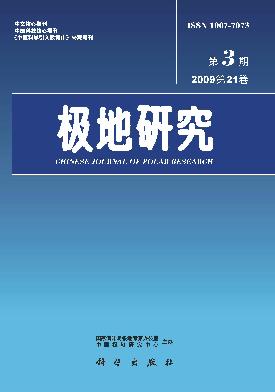The data of 28 XBTs and 25 XCTDs obtained by the 19 th Chinese National Antarctic Research Expedition in the section from Prydz Bay, Antarctica to Frementle, Australia in February, 2003 are used to analyze the properties of water masses distribution and fronts of the upper ocean, and the influence of sea ice, precipitation and advection on the freshwater and heat input of sea surface south of Polar Front (PF) is discussed. An unusual low salinity (34.58) water mass is observed at the depth of 800—900m in the location around 63.5°S,79.7°E. The Antarctic Slope Front (ASF), Polar Front (PF), Subantarctic Front (SAF) and Subtropical Front (STF) appear in the investigation section from south to north. PF lies on 54°S, ,90.4°E; SAF locates at 45.3°—47.5°S ,102.5°—104.4°E and reaches the bottom of the measured depth with two high temperature gradient cores; For the first time double STF structures is discovered and locate at 41.9°—42.6°S, ,106.7°—107.3°E and 37.7°—38.9°S, 109.8°—110.7°E, respectively. PF, SAF and STF can be identified from the properties of surface layer in some degree. Especially, the representation of SAF in the temperature and salinity of surface layer is distinct. The flow cores of ACC passing the investigation section locate at PF and SAF, which is in consistent with the historical data. The variation trend of freshwater and heat input on the sea surface south of PF is in close correlation with the meridional distribution of the thickness of sea ice and the range of sea ice extending northward in this region in austral winter.

